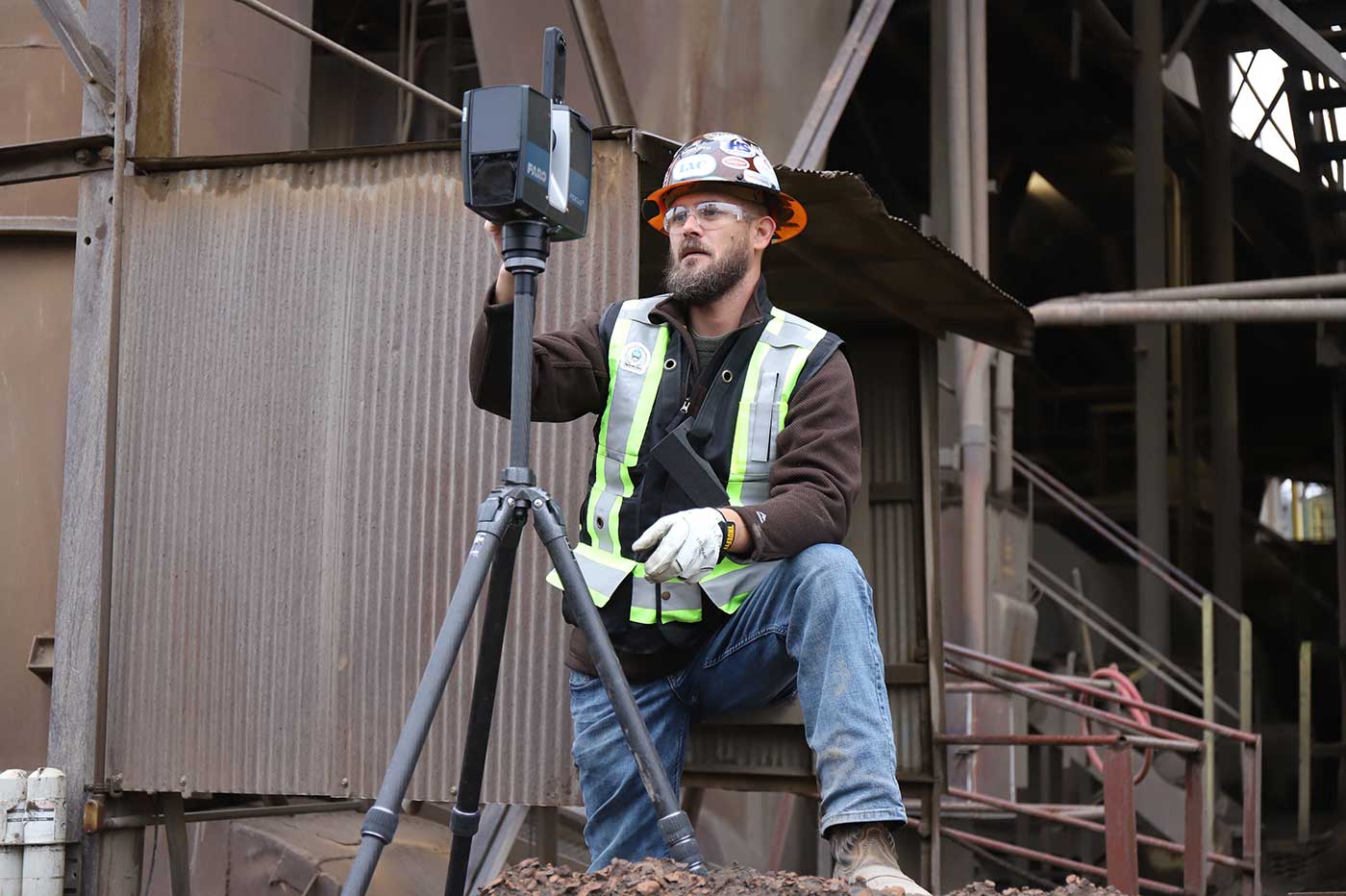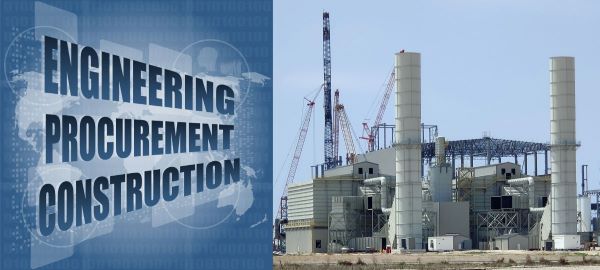Negotiating EPC Contracts: Can Project Owners Save Money by Procuring Materials?

IAC works with many industrial construction clients in the very early stages of their capital projects. We often help with preliminary design and budgeting. Clients like the appeal of saving money by procuring many of the larger ticket items themselves. Are the clients really saving money though?
Let’s look at the ricks and challenges of EPC procurement from a couple of different angles and see if it is worth the client purchasing items or if it is better for the EPC contractor (or General Contractor) to purchase them.
Considerations need to be given to various areas for the client to make the best decisions when it comes to efficient procurement for EPC project cost control.
We will discuss several factors in this article:
- How much will the EPC project's cost risk be reduced?
- How do equipment lead times impact the Engineering, Procurement, and Construction process?
- How much time and effort is required to procure large, specialized industrial equipment and make sure that it is delivered before needed per the construction schedule?
- Does the EPC Project Client have the staff to handle the procurement, or all the items required for the project and what is the cost of administration of those items?
- What are the costs associated with delayed deliveries on an EPC Construction project?
- Contractor delay costs.
- Contractor productivity losses.
- Contractor extended indirect costs.
- Contractor extended direct costs.
- Speed to market costs.
- Client Contractual Obligations and Lost sales.
- EPA Fines – Consent Decree
- Procurement challenges in the current market.
- Purchasing used or already fabricated equipment.
- Summary - Real costs of purchase
Let’s start by answering the first question.
How much will the EPC Procurement cost risk be reduced if the client purchases the equipment (or material)?
We will use the term equipment, interchangeably, to cover material as well. Material can be considered any permanent plant structure. An example would be the structural steel package. For the most part, the Client and EPC contractor should have the right amount of information to order equipment at around the same time. In general, cost risk is dramatically reduced at the time of the purchase. Many purchase order contracts include different terms and conditions that protect both the buyer and seller. The sooner a purchase can be made, the better. There is always an outside chance that the purchase price could be reduced as time moves on; however, it is more likely that in increases than decreases. It should be considered a race to order equipment as soon as possible. This does not make the cost risk zero but reduces it.
EPC Project Procurement Lead Times
A proper schedule is important to every EPC project. The project schedule should start with a start date and a target completion date. This identifies the EPC project's critical path. Lead times for equipment should be entered into the schedule to determine when items are needed on site. If the schedule is accurate and built with the proper logic, predecessors, and successors, the schedule becomes a useful tool. The schedule is the Contractor’s best tool to plan the project. When a Contractor puts together an estimate for a project, a schedule is used to determine the costs associated with time. These costs can be significant and vary depending on the size, speed, and manpower required to complete the project. Anytime that an Owner supplied (or Contractor supplied) delivery date is missed, and it is on the critical path, it costs the Contractor time and money. These costs can come in the form of extended time on the project which extends indirect costs (Site staffing and costs just o be on-site such as a job shack) and variable costs such as keeping a specific size crane on-site just to set the piece of equipment that the contractor is waiting on.
How much time and effort is required to procure industrial equipment and make sure it is delivered before needed per the EPC construction schedule?
Many clients may not always realize the time commitment required to procure items for an EPC construction project. Getting items quoted, negotiating terms and conditions, and issuing a purchase order is just the beginning of the process. To ensure equipment arrives on time, several things must happen:
- Freight must be arranged.
- Loading and unloading of items has to be arranged. Typically, the Contractor handles the unloading as it is often involved in the installation or staging.
- Freight Claims must be handled if something shows up damaged.
- Down payments may be required, and they might need to be pushed through the accounting group.
- Site visits to the equipment fabricator’s facility might be required for items that are critical to the success of the project.
- Follow up calls and proof of progress need to be made. This could be concerning the engineering, shop drawing, and fabrication phases.
- Many sophisticated clients may require fabricators to fully shop assemble pieces of equipment to make sure they will fit on the jobsite. Clients usually like to have a representative on-site to witness this.
As you can see, there is more of a commitment than just issuing a purchase order to complete the EPC procurement process.
Do you have the staff to handle the procurement, or all the items required for the project and what is the cost of administration of those items?
This may require dedicated personnel or more time than the current Owner’s staff can manage. Considerations need to be made to make sure that the Client can properly handle these tasks. Some Owners choose to hire a third-party project management group and they can include procurement in their scope. Using the Engineer of Record on the project to procure some of the Owner procured items is also an option. Another option is to include it in the Contractor’s scope of work. The option to include it in the Contractor’s scope of work is likely the easiest option for the client. This places sole responsibility for procurement (and follow up) on the Contractor. Many companies are opting for this option in today’s unpredictable procurement climate.
What costs are associated with delayed deliveries on an EPC Construction project?
- Contractor Delay Costs – When a contractor bids on a project, they normally put a preliminary construction schedule together as part of their proposal. Smart Contractor’s have language in their proposal identifying or pointing out assumptions made for owner procured delivery dates. Contractors, in order to stay competitive, have to make these assumptions in order to properly know how much time they will be on the project and what staffing level is needed. These durations, on the project, and staffing levels are dependent on the Owner’s delivery dates. Some larger projects may have a field office staff of more than ten people and direct project staff of well over 100 people. For example, if the field office has 10 people in the office at an average of $75/hr, that is $750/hr. This does not count any other indirect costs such as a job trailer, temp utilities, etc. If there are 100 workers in the field at an average of $65/hr, that is $6,500/hr. If you add the field office staff and the direct staff, you are over $7,000/hr. If the awaited material delivery is on the critical path, and no other work is available for the same skilled craftsmen, this could cost the Contractor over $70,000/day. This does not consider any crane costs or other rental equipment which could put the cost over $100,000/day depending on how the project uses rental equipment. If solely caused by an Owner, this would be to the Owner’s account.
- Contractor Productivity Losses – In addition to the costs associated with the field staff not being able to work on the planned installation, they would also be required to be either sent home (laid off) with a strong risk of not getting them back, sent to another project (would cost to relocate them) or redirected to another task. The other task may not be their specialty or could be well below their capabilities. Ideally, you would not want an experienced pipefitter or welder, pushing a broom. Just the cost of regrouping, rerigging and starting another task could decrease productivity by as much as 30-40%.
- Contractor Extended Indirect Costs – We gave an example above of how the Contractor’s indirect project costs can be affected by extending the project due to a late delivery on an Owner supplied (or Contractor supplied) item. Indirect costs are the costs associated with a project that are usually a function of time and are somewhat fixed costs. Labor costs would include a Project Manager, Site Manager, Safety, QC, Admin and any other field office staff or direct home office staff. Rentals could include a crane, rigging, crane mats, skid steers, telescoping forklifts and any other specialty equipment required. Other indirect costs would be costs associated with just being on-site. This might include job trailers, break trailers, ice machines, copiers and temporary utilities. If the project is extended, these costs can be substantial.
- Contractor Extended Direct Costs – This was also included in the example above. This is primarily the site craftsmen and the costs associated with their presence on the project. This can be about 70% of the total project costs. Keep in mind that many contractors have traveling crews and they get paid per diem if they are working or not. Per diem can be anywhere form $100-200/day, depending on position and location. Rental equipment, that is specific to a task, is considered a direct cost as well. If a crane is utilized for multiple tasks and is kept for the whole project, it may be considered an indirect cost.
- Speed To Market Costs – Speed to Market is key in many industries. Once a client determines that a project is financially viable, it is almost a race to proper completion. This may include complete engineering, procurement, permitting, and construction. The time value of money must be considered on every project. Markets change often and it is important for clients to catch the trend, or need for a product, before it is over. Careful planning is required, and many clients opt for an EPC approach that includes the EPC Contractor procuring materials and equipment. A single source for a project delivery can make the most sense as many EPC Contractors have relationships with their vendors and can expedite materials and equipment easier than a client that is just buying one or two of the same products and won’t need another one for years. Many EPC Contractors also already have credit accounts set up. This allows for better pricing and avoids the days or weeks for the process of someone setting up a new account. The relationships are also already built between the vendor’s staff as well as the EPC’s procurement staff.
- Client Contractual Obligations and Lost Sales – Let’s say you want to build a frac sand plant. You have a client that will buy your sand for a premium at $100/ton if you have your new plant up and running in 8 months. You sign a contract with them and experience delays in getting your wet plant up and running due to a late delivery on a hopper to load your product. You slip a month past your 8-month committed completion date. They need Frac Sand from someone, and it won’t be you and it may cost you the whole contract. That income that was planned to help pay for your plant just went away. That is a tough predicament to be in and a newer company may not recover from that.
- EPA Fines/Consent Decree – IAC’s core business is in the air pollution control industry. Air pollution is tracked and monitored by the Environmental Protection Agency (EPA). If your plant is producing waste into the air that is above the EPA limits, you are required to get the pollutants below the limited levels. Many times the EPA will execute a Consent Decree. This is a legally binding commitment between the Owner and the EPA and has a date that the Consent Decree must be satisfied. Penalties and fines will start accruing if that date is not met. These fines can be substantial and can double each month.
EPC Project Procurement Risks & Challenges in the Current Market
Wow! Have we ever seen such uncertain times in the marketplace? Hopefully we are on the tail end of it and things can become somewhat predictable again. Prices are all over the place and deliveries are not predictable at all. How do we protect ourselves if we are a project Owner or an EPC Contractor trying to supply everything? It is not easy. The supplier world is a small world and many vendors trade employees like baseball cards. The market players get recycled, and we see them again with a different supplier. Burning bridges to get what you want on one project is one thing, but you will likely have to work with the vendor again if you are a Contractor. What are your best options?
- Get Delivery Dates in Purchase Order – A PO is not effective unless it has an expected delivery date on it. The ship date is important, but the delivery date is more important if the vendor is handling freight. Make sure and set a realistic fabrication time frame and consider tying any liquidated damages to late deliveries.
- Communicate Frequently and Effectively – The squeaky wheel gets the oil. This is true when following up with vendors. Constant Communication is key to learning all news, good or bad.
- Buy Local – It is always better to buy local if you desire more control of the deliveries. Buying from a domestic shop makes it much easier to visit the shop and monitor progress. It also eliminates the hassle of dealing with international shipping. A major piece of equipment stuck in customs doesn’t make anyone money.
Should an EPC Project Client Consider the Purchase of Used or Already Fabricated Equipment?
If you prefer to save time and money, but willing to give up the new car scent, gently used, or new yet never assembled equipment is a viable option. Many EPC Contractors keep their ear to the tracks and keep quality used equipment or equipment that someone cancelled the order on, within arm’s reach for that perfect client. If you choose this route, make sure all the parts are there and it fits your application with no modifications required. Example: You might find a great deal on some unused storage silos. You must make sure that they are rated for the weight of the product that you are using. You also need to make sure that the hopper angle is correct for your product and any additional aeration or other modifications are not necessary. Depending on age, some fasteners, lubricants, and sealants might need to be replaced, even if never installed. Used products may also not come with a warranty. Make sure to have someone, with intimate knowledge of the product, put their eyes on the equipment prior to purchasing. Time and money can be saved; however, finding bargains is an art.
Summary: Real Costs of the Procurement Process for an EPC Construction Project
So with all this information, what is the best thing for the Owner to do? It really all depends on how your company is set up. If your company has a “Projects” division with enough capacity to administrate your project, you should consider doing it or a portion of it.
Eliminating different kinds of risk is key. You can eliminate cost risk and schedule risk if you purchase large pieces of equipment or materials very early in the project. That is what the EPC Contractor is going to do, and he/she will follow up on those critical path items on a frequent basis.
The critical components should also be checked during fabrication. Send someone to look, and take pictures, that knows what quality looks like and knows were the fabricator needs to be to stay on schedule. We have recently seen Owner’s or Owner’s representatives, taking the least expensive route and go with a lower budget, inexperienced, supplier and it has cost the project millions of dollars and almost a year delay. They failed to issue POs in a timely manner and provide proper follow up with the fabricator. If they did follow up, they send someone to view progress that didn’t really know what they are looking at. This cost the client an additional 20-30% to complete the project and the additional costs associated with the plant not being in full production.
It pays to have experience and knowledge; it pays to team with IAC!
David Dorman, MBA, PMP, CEP
To learn more, contact IAC today!



